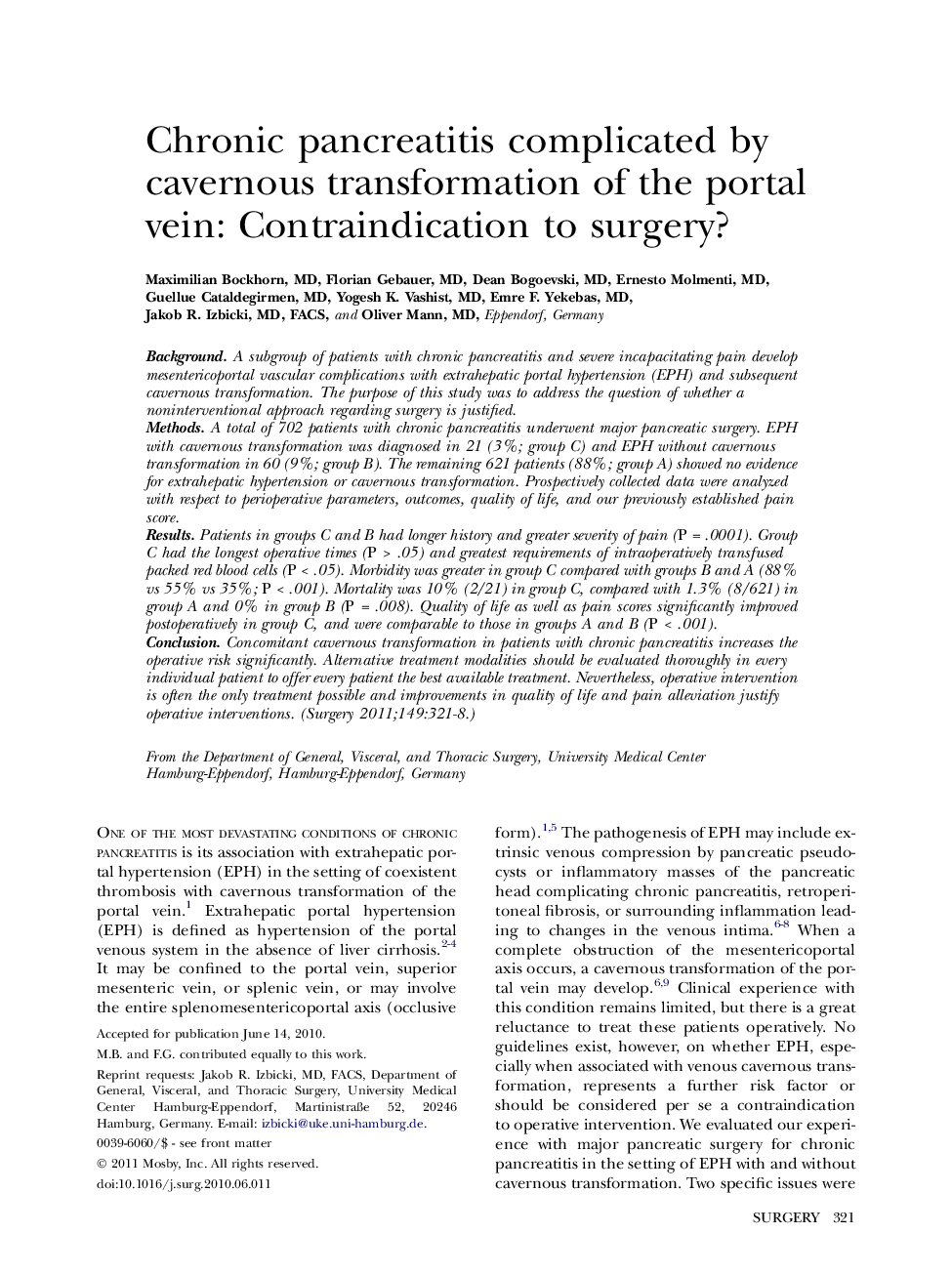| Article ID | Journal | Published Year | Pages | File Type |
|---|---|---|---|---|
| 4308165 | Surgery | 2011 | 8 Pages |
BackgroundA subgroup of patients with chronic pancreatitis and severe incapacitating pain develop mesentericoportal vascular complications with extrahepatic portal hypertension (EPH) and subsequent cavernous transformation. The purpose of this study was to address the question of whether a noninterventional approach regarding surgery is justified.MethodsA total of 702 patients with chronic pancreatitis underwent major pancreatic surgery. EPH with cavernous transformation was diagnosed in 21 (3%; group C) and EPH without cavernous transformation in 60 (9%; group B). The remaining 621 patients (88%; group A) showed no evidence for extrahepatic hypertension or cavernous transformation. Prospectively collected data were analyzed with respect to perioperative parameters, outcomes, quality of life, and our previously established pain score.ResultsPatients in groups C and B had longer history and greater severity of pain (P = .0001). Group C had the longest operative times (P > .05) and greatest requirements of intraoperatively transfused packed red blood cells (P < .05). Morbidity was greater in group C compared with groups B and A (88% vs 55% vs 35%; P < .001). Mortality was 10% (2/21) in group C, compared with 1.3% (8/621) in group A and 0% in group B (P = .008). Quality of life as well as pain scores significantly improved postoperatively in group C, and were comparable to those in groups A and B (P < .001).ConclusionConcomitant cavernous transformation in patients with chronic pancreatitis increases the operative risk significantly. Alternative treatment modalities should be evaluated thoroughly in every individual patient to offer every patient the best available treatment. Nevertheless, operative intervention is often the only treatment possible and improvements in quality of life and pain alleviation justify operative interventions.
